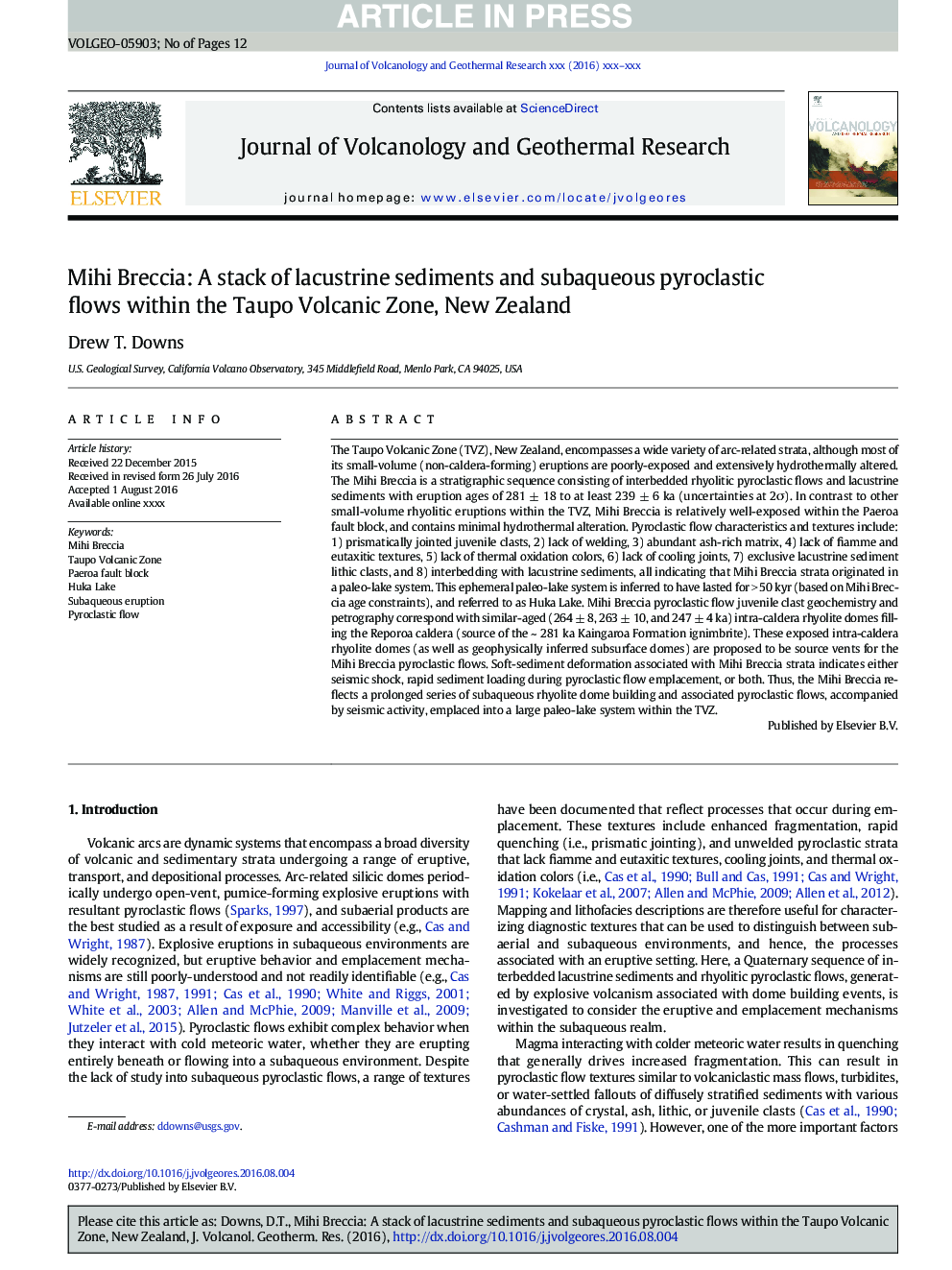| کد مقاله | کد نشریه | سال انتشار | مقاله انگلیسی | نسخه تمام متن |
|---|---|---|---|---|
| 5783767 | 1638295 | 2016 | 12 صفحه PDF | دانلود رایگان |
عنوان انگلیسی مقاله ISI
Mihi Breccia: A stack of lacustrine sediments and subaqueous pyroclastic flows within the Taupo Volcanic Zone, New Zealand
دانلود مقاله + سفارش ترجمه
دانلود مقاله ISI انگلیسی
رایگان برای ایرانیان
موضوعات مرتبط
مهندسی و علوم پایه
علوم زمین و سیارات
ژئوشیمی و پترولوژی
پیش نمایش صفحه اول مقاله

چکیده انگلیسی
The Taupo Volcanic Zone (TVZ), New Zealand, encompasses a wide variety of arc-related strata, although most of its small-volume (non-caldera-forming) eruptions are poorly-exposed and extensively hydrothermally altered. The Mihi Breccia is a stratigraphic sequence consisting of interbedded rhyolitic pyroclastic flows and lacustrine sediments with eruption ages of 281 ± 18 to at least 239 ± 6 ka (uncertainties at 2Ï). In contrast to other small-volume rhyolitic eruptions within the TVZ, Mihi Breccia is relatively well-exposed within the Paeroa fault block, and contains minimal hydrothermal alteration. Pyroclastic flow characteristics and textures include: 1) prismatically jointed juvenile clasts, 2) lack of welding, 3) abundant ash-rich matrix, 4) lack of fiamme and eutaxitic textures, 5) lack of thermal oxidation colors, 6) lack of cooling joints, 7) exclusive lacustrine sediment lithic clasts, and 8) interbedding with lacustrine sediments, all indicating that Mihi Breccia strata originated in a paleo-lake system. This ephemeral paleo-lake system is inferred to have lasted for > 50 kyr (based on Mihi Breccia age constraints), and referred to as Huka Lake. Mihi Breccia pyroclastic flow juvenile clast geochemistry and petrography correspond with similar-aged (264 ± 8, 263 ± 10, and 247 ± 4 ka) intra-caldera rhyolite domes filling the Reporoa caldera (source of the ~ 281 ka Kaingaroa Formation ignimbrite). These exposed intra-caldera rhyolite domes (as well as geophysically inferred subsurface domes) are proposed to be source vents for the Mihi Breccia pyroclastic flows. Soft-sediment deformation associated with Mihi Breccia strata indicates either seismic shock, rapid sediment loading during pyroclastic flow emplacement, or both. Thus, the Mihi Breccia reflects a prolonged series of subaqueous rhyolite dome building and associated pyroclastic flows, accompanied by seismic activity, emplaced into a large paleo-lake system within the TVZ.
ناشر
Database: Elsevier - ScienceDirect (ساینس دایرکت)
Journal: Journal of Volcanology and Geothermal Research - Volume 327, 15 November 2016, Pages 180-191
Journal: Journal of Volcanology and Geothermal Research - Volume 327, 15 November 2016, Pages 180-191
نویسندگان
Drew T. Downs,